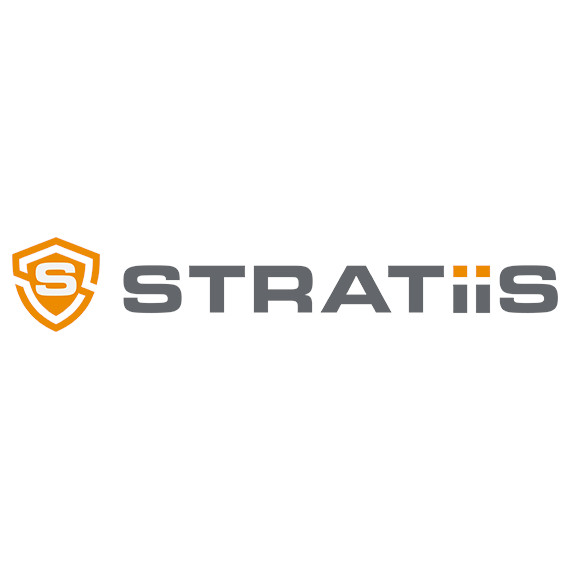
Technology has the power to transform every industry. In the last century alone, new ways of communicating, travelling, manufacturing, and working have completely changed our lives. In more recent years, Artificial Intelligence has played this transformative role more than ever.
AI has introduced new ways of analysing data, dealing with customers, and even creating art. It has also been reshaping cybersecurity and helping us deal with threats.
As we store more data online, engage in e-commerce, and navigate a multitude of connected devices, the significance of cybersecurity has never been more pronounced. Cyber threats have evolved, becoming more sophisticated and elusive, demanding a proactive and intelligent response.
From identifying new vulnerabilities and defending against relentless adversaries to automating incident responses and minimising the burden on human security teams, AI is reshaping the cybersecurity landscape.
In this article, we will discuss how AI has been used to prevent and resolve threats and what are the benefits of adopting such tools. Discover how new technologies are evolving the way we deal with new and more complex threats.
How is AI transforming cybersecurity?
Artificial intelligence (AI) is playing a significant role in transforming cybersecurity practices in several ways. It has become a critical tool for both defending against cyber threats and for cybercriminals seeking to launch attacks.
Threat detection and prevention
AI can analyse vast amounts of data and establish baseline behaviour for a network or system. When it detects anomalies or deviations from the baseline, it can trigger alerts, potentially signalling a security breach.
Machine learning models can continuously learn and adapt to evolving network and system behaviours, making them more effective in identifying novel threats.
AI's ability to process and analyse vast amounts of data quickly and accurately, coupled with its capacity to adapt to evolving threats, makes it an invaluable tool in threat detection and prevention. By leveraging AI, organisations can enhance their cybersecurity posture and respond to threats more effectively and efficiently.
Malware detection
AI-powered anti-malware systems use machine learning to recognise and quarantine known and unknown malware. They can adapt to new threats in real time, reducing the need for manual signature updates.
As we discussed, new technologies can identify malware by analysing code and behaviour, even if the malware has polymorphic or metamorphic characteristics.
AI-driven malware detection is a dynamic and adaptive approach that enhances an organisation's ability to identify and respond to the ever-evolving landscape of cyber threats. These AI systems continuously learn and adapt, making them a critical component of modern cybersecurity strategies.
Phishing detection
AI can analyse emails and web content to detect phishing attempts and fraudulent activities. It identifies malicious URLs, fake domains, and suspicious patterns in communication.
Natural language processing (NLP) can also be used to identify fraudulent or malicious content in messages and social media.
Automated incident response
AI-driven systems can respond to security incidents in real time by isolating compromised systems, blocking malicious traffic, and executing predefined response plans.
They can also assist in forensics by collecting and analysing data related to an incident.
Automated incident response powered by AI not only accelerates the response time but also enhances the overall efficiency and effectiveness of incident handling processes. It allows organisations to respond to security threats in a timely and intelligent manner, minimising potential damage and reducing the workload on security teams.
User and entity behaviour analytics (UEBA)
UEBA tools utilise AI to profile user and entity behaviour, helping to identify suspicious or unauthorised activities. They can detect credential misuse, privilege escalation, and other insider threats.
UEBA powered by AI is a valuable tool for organisations looking to enhance their security posture and detect insider threats and other security incidents proactively. It helps security teams stay ahead of evolving threats and respond effectively to behavioural anomalies that may indicate security risks.
Access control
AI can improve access control by continuously assessing and adjusting user privileges based on their behaviour and risk profiles.
Zero Trust security models often leverage AI to enforce strict access controls based on identity and context.
AI in access control not only strengthens security but also enhances the user experience by providing a more dynamic and adaptive approach to managing access permissions. It allows organisations to maintain a fine balance between security and user convenience while reducing the risk of unauthorised access and data breaches.
Vulnerability management
AI can significantly enhance vulnerability management by automating and improving the identification, assessment, prioritisation, and remediation of security vulnerabilities in an organisation's infrastructure.
By leveraging AI for vulnerability management, organisations can improve their security posture, reduce the risk of exploitation, and streamline the patch management process. This not only enhances the overall security of the organisation but also helps in compliance with security standards and regulatory requirements.
Endpoint security
AI plays a pivotal role in improving endpoint security, which focuses on protecting individual devices (endpoints), such as computers, smartphones, and IoT devices, from various security threats.
By leveraging AI in endpoint security, organisations can proactively defend against a wide range of threats, automate incident response, and reduce the workload on security teams. This results in a more robust and adaptive approach to securing individual devices and the data they store and access.
Why use AI in cybersecurity?
As discussed, AI can significantly improve the way we deal with threats, risks and security issues in our systems.
AI-powered cybersecurity tools are highly effective at identifying known and unknown threats, including malware, zero-day vulnerabilities, and advanced persistent threats. Their ability to analyse large datasets quickly enables the early detection of malicious activities and anomalies.
By continuously monitoring network traffic, user behaviour, and system activities in real time, AI allows for immediate threat detection and response, reducing the window of opportunity for attackers.
Furthermore, AI-driven security solutions can significantly reduce false positives. By accurately distinguishing between genuine threats and benign activities, they prevent security teams from being inundated with irrelevant alerts, enabling better resource allocation.
Going beyond the capabilities of detection and prevention, AI can automate various aspects of incident response, from threat containment and isolation of compromised systems to remediation. This results in faster and more efficient responses to security incidents, minimising potential damage.
AI tools offer businesses a proactive, intelligent, and adaptable approach to cybersecurity, empowering them to stay ahead of evolving threats, respond to incidents more effectively, and strengthen their overall security posture. As the threat landscape becomes increasingly complex, AI provides a vital line of defence in safeguarding digital assets and maintaining the trust of customers and stakeholders.
Are cybercriminals using AI?
It is important to remember that cybercriminals are using AI to enhance the effectiveness and sophistication of their attacks. This is a growing concern for the cybersecurity community, as it poses significant challenges to traditional security measures.
As a result, the field of AI in cybersecurity, often referred to as "AI for cybersecurity," is also rapidly evolving to counter these emerging threats. It emphasises the use of AI to strengthen defences and identify and respond to AI-driven attacks.
Here are some ways in which cybercriminals are using AI:
Automated attacks
Cybercriminals are using AI to automate various stages of the attack process, from scanning for vulnerabilities to launching attacks. This allows them to scale their operations and increase their chances of success.
Targeted phishing
AI can be used to personalise phishing attacks, making them more convincing. Cybercriminals use AI to analyse the target's online activity and create phishing emails that are highly tailored to the victim, increasing the likelihood of a successful attack.
Social engineering
AI helps cybercriminals analyse and mimic human behaviour, making it easier to manipulate individuals into divulging sensitive information or performing specific actions.
Credential stuffing
AI-driven tools can automate credential stuffing attacks, where cybercriminals use stolen usernames and passwords to gain unauthorised access to multiple accounts. AI can help in quickly identifying valid credentials.
Evasion techniques
AI is employed to create evasion techniques that allow malware to avoid detection by traditional security tools. For example, AI can generate polymorphic malware that changes its code each time it infects a new target.
Adaptive malware
Malware that uses AI can adapt its behaviour based on the target's environment, making it harder to detect and more destructive. It can also evolve in response to security measures.
Data exfiltration
AI is used to analyse data for sensitive or valuable information, making it easier for cybercriminals to identify and exfiltrate data of interest. It can also optimise the data exfiltration process to avoid detection.
Password cracking
AI can significantly speed up the password-cracking process by leveraging advanced techniques and predicting likely passwords based on available data.
IoT attacks
AI-powered botnets are targeting Internet of Things (IoT) devices, taking advantage of weak security in devices like cameras and routers. These devices are then used to launch large-scale attacks.
Deepfakes
AI is used to create deepfake videos and audio, which can be employed for social engineering, misinformation campaigns, and fraud.
Ransomware
AI can be used to improve the targeting of ransomware attacks by identifying high-value targets and maximising the impact of the attack.
Denial of Service (DoS) attacks
AI-driven botnets can execute more sophisticated DoS attacks, overwhelming target systems and networks with traffic causing disruption.
AI-based swarming
Cybercriminals use AI to coordinate and manage swarms of compromised devices, enabling large-scale and synchronised attacks.
Security evasion
AI can be used to identify and bypass specific security measures, such as intrusion detection systems, firewalls, and antivirus solutions.
Fraud detection evasion
AI can help cybercriminals circumvent fraud detection systems by behaving in ways that appear legitimate or by impersonating legitimate users.
Conclusion
Effective cybersecurity is a competition with more advanced threats. As technology evolves and our capacity to detect, prevent, and respond to threats improves, these risks and issues also get more harmful and dangerous.
To protect data, systems, and businesses, organisations must continue to employ every resource available. AI is the newest and most advanced possibility for companies that want to be better prepared for the threats of the future.
As we've seen in this article, Artificial Intelligence can take your cybersecurity capabilities to the next level, anticipating potential issues and automating effective responses. However, AI alone is not the answer to all potential cybersecurity problems. Robust solutions include backups, system updates, employee training and more, all to ensure your data is secure.



